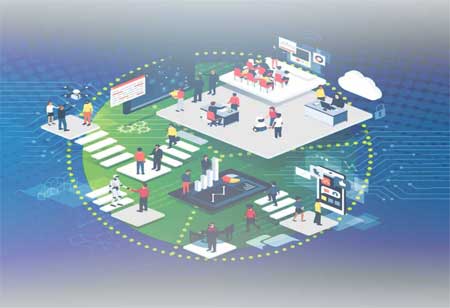THANK YOU FOR SUBSCRIBING
Tech-Enabled Transport Transformation
Transportation has evolved significantly since the invention of the wheel and the use of sails.

By
Apac CIOOutlook | Tuesday, October 31, 2023
Stay ahead of the industry with exclusive feature stories on the top companies, expert insights and the latest news delivered straight to your inbox. Subscribe today.
Technology is transforming transportation with autonomous vehicles, electric mobility, data-driven optimisation, and smart infrastructure, enhancing efficiency, safety, and sustainability.
FREMONT, CA: Transportation has evolved significantly since the invention of the wheel and the use of sails. Advancements, ranging from steam engines to internal combustion vehicles, have continually expanded human mobility horizons. This breakthrough holds the potential to fundamentally redefine how goods and individuals will be transported in the coming decades.
Autonomous Vehicles
The most transformative advancement in current transportation technology is autonomous vehicles. This technology employs cameras, radar systems, sensors, and artificial intelligence to enable vehicles to navigate and operate without human drivers.
Electrification of Transport
The rapid growth of electric vehicles represents a significant transformation in transportation. Electric vehicles offer numerous environmental and economic advantages compared to conventional internal combustion engine cars. They efficiently convert more than 70 per cent of electric energy into wheel power, resulting in reduced emissions and lower fuel expenses. Additionally, maintenance costs are lower due to the absence of complex engines and transmissions.
Mobility as a Service (MaaS)
Mobility as a Service (MaaS) platforms integrate multiple transportation options seamlessly into a single-user application. These applications allow users to plan their journeys, make bookings, handle payments, and purchase tickets for a wide range of transportation services, including public transit, ridesharing, scooters, and bike-sharing.
Drone Transportation
In just a decade, drones have transitioned from primarily military applications to widespread consumer use. Companies are currently experimenting with drones to enhance cost-effective, rapid final-stage delivery services. There is also a growing focus on the development of fixed-wing passenger drones like the VoloCopter.
Smart Infrastructure Smart infrastructure includes roads, bridges, and traffic systems equipped with sensors and connectivity for real-time monitoring and adaptive responses to various conditions. For example, smart highways can warn oncoming vehicles about potential hazards, and smart streetlights can adjust their brightness based on factors like traffic flow and natural light. Smart parking systems provide drivers with directions to available parking spaces. When combined with navigation applications and self-driving vehicles, these components can optimise traffic flow, improve road efficiency, enhance safety, and adjust speed limits or lane directions according to traffic conditions.
Enhanced Connectivity
V2X V2X technology enables vehicles to collaborate on actions such as merging onto highways, navigating intersections, and avoiding hazards. It supports features like emergency electronic brake lights. When integrated with autonomous driving systems, this connectivity has significant potential to reduce accidents and traffic congestion. Achieving this requires the support of 5G networks and communication protocols like DSRC, ensuring fast and reliable connections crucial for V2X operations.
Sustainable Transportation
The role of technology in advancing sustainable transportation systems is paramount. Electric vehicles, renewable energy integration, lightweight materials, and the electrification of public transit all contribute to emissions reduction. Data analytics plays a crucial role in optimizing logistics routes and enhancing capacity utilisation. Mobile applications encourage the adoption of shared mobility solutions, while innovations in charging infrastructure and smart grids facilitate the expansion of renewable energy sources.
Advanced Navigation Systems
Sophisticated real-time navigation systems now incorporate diverse data sources and artificial intelligence. They can superimpose digital arrows and route guidance onto real-world scenes, enhancing the driving or walking experience. Hyperlocal traffic prediction algorithms utilise historical data, sensors, and cameras to provide advance warnings about traffic congestion points.
Economic and Job Market Impact
Emerging transportation technologies have the potential to bring about significant economic and labour market disruptions. For example, the introduction of self-driving trucks could replace millions of trucking jobs but could also reduce logistics costs. Similarly, the shift to simpler electric vehicle (EV) drivetrains reduces the demand for maintenance and repair jobs. On the positive side, this transition creates new opportunities in fields such as data analytics and battery servicing.
The evolution of transportation technology has consistently witnessed significant leaps, progressing from the steam engine to digital navigation. Collectively, these innovations are poised to bring profound changes to transportation economics, society, and culture, much like the impact of the automobile a century ago. Nevertheless, thoughtful regulation and planning are essential to optimise the benefits and minimise disruptions that affect economies, communities, and the workforce.





